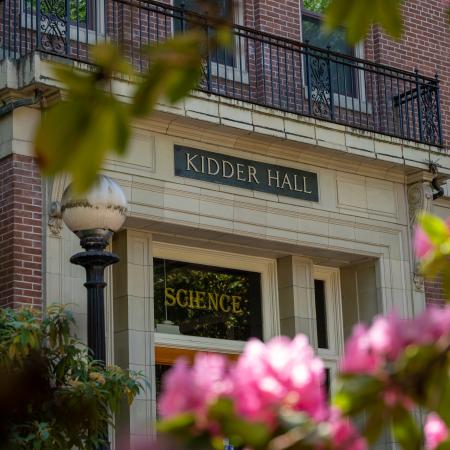University requirements are summarized in the Academic Catalog. You should check in particular the grade point averages required to remain in good standing and to graduate. Courses required for the physics major may not be taken under S-U grading. Grades of C– or better must be attained in all courses required for the Physics major. Courses in which a lower grade is received must be repeated until a satisfactory grade is received.
You must satisfy the OSU requirements of the Baccalaureate Core. Note that the physical science requirement can be satisfied by either your introductory physics course (PH 211, 212, 213) or chemistry course (CH 221, 222, 223). It is not necessary to complete another physical science course for the Baccalaureate Core. You must, however, complete at least one term of biological science as required for the Baccalaureate Core.
In order to satisfy the Writing Intensive Course (WIC) requirement of the OSU Baccalaureate Core, Physics majors are required to write a senior thesis on a research project. Students must enroll in PH 403 (Thesis) for one credit in each of the three terms of the senior year (or the year of graduation, for those in a five-year program). This course meets weekly and the three total credits satisfy the OSU WIC requirement. For more information, please visit the WIC Thesis Information page.
Courses
Corvallis Campus
Ecampus
Basic degree program requirements
Introductory physics
PH 211, 212, 213, 221, 222, 223
Computational physics
PH 365, 366, 367
Intermediate physics
PH 315, 335
Paradigms
PH 422, 423, 424, 425, 426, 427
Capstones
PH 431, 441, 451, 481
Electronics labs
PH 411, 415 or 464
Electives
Choose two from these or consult the advisor for other possibilities
PH 415, 455, 464, 482, 483, 495, 562, 575, 585, 591
Research & Thesis (WIC)
PH 401, 403
Some of these courses are replaced under the various degree options. Other requirements are:
General Chemistry
CH 231, 232, 233, 261, 262, 263
Mathematics
MTH 251, 252, 253 or 264/265, 254, 255, 256, 341
Transfer student requirements
Students who intend to transfer to OSU from another institution should arrange to speak with the Head Advisor at the earliest possible time. Community college transfers should speak with the advisor before planning the community college curriculum, if possible.
Students who plan to enter OSU after two years of previous work and to graduate in two additional years should complete courses equivalent to PH 211, 212, 213; MTH 251-256; and CH 231, 232, 233, 261, 262, 263. Failure to complete these courses, especially the physics and math courses, will almost certainly add a full year to your studies at OSU.



